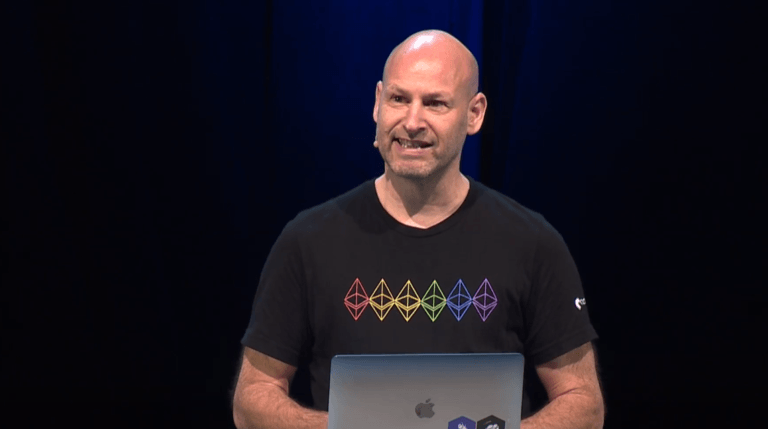Joseph Lubin, founder of the Ethereum-focused blockchain technology company Consensys, took to the stage during the last day of Devcon4, in Prague, to outline his crystallizing vision of an Ethereum-powered “Web 3.0,” and to push back against criticisms that Ethereum is not managing to find its “killer app.”
Lubin reiterated several examples of the ways in which Ethereum-powered decentralized apps (Dapps) are changing or will change not only the Internet, but seemingly broad swaths of modern human life. He asserted that Ethereum, far from needing a specific “killer app,” is “the killer ecosystem, an ecosystem that will transform global economic, social, and political systems.”
He went on, hitting back directly at “pundits”:
[they] don't notice [the notable progress] because the benefits accrue in a decentralized fashion. Pundits are having trouble recognizing these killer applications because they don't reward existing intermediaries, or pile stacks of value into new intermediaries – but many lives are improving.
Notwithstanding this defiance, he said there will come killer (D)apps in the traditional sense of an Uber or Airbnb, which will perhaps gain adoption in 2019.
In this vein, some especially promising Dapp platforms were highlighted, such as the OpenLaw platform. OpenLaw is aims to largely dissolve the intermediary of the legal profession, whose business model according to Lubin is “create irrelevant issues, and as much detailed friction as possible [in order to] charge their clients by the hour to handle it.”
He described other, by now well trodden themes, such as supply chain tracking, publishing and content creation, identity and location verification, etc., on the ethereum blockchain.
Lubin also added, however, that cryptocurrency in itself was already a killer app, echoing the sentiments of another industry heavyweight, Andreas Antonopoulos.
A Flat Consensys
Lubin spent some considerable time speaking on the new organizational structures that Consensys, endeavouring to be a “flat organization,” is pioneering. “Consensys members self-organize – nobody tells anyone what to do” Lubin said, which provokes the need for “new ways of taking responsibility and assuring accountability.”
Departments of Consensys are thus given mostly free reign to control their own daily operations, and be funded by a sort of peer-approved budgeting capacity. Lubin clearly sees an end goal in which as little hierarchy as possible obtains, even in a large and complex organization – as he puts it, a vision of “many autonomous units, each operating as though they’re embedded in an efficient free market,” but still under one roof.
A less grandiose announcement gleaned from Lubin’s address was the Rimble user interface design standard initiative, which he compared to Google’s Material design language standard, but with unique “web-3” features. The open-source collection is meant to aid developers in deploying Dapp/web-3 interfaces that they may not accustomed to, and “aims to create common Dapp UX patterns, validated through user research, and built for developers.”








